Resources by Steven C. Ibbotson

The Power of Partnership celebrates the nuance and depth of student-faculty partnerships in higher education and illustrates the many ways that partnership—the equitable collaboration among students, staff, and faculty in support of teaching and learning—has the potential to transform lives and institutions. The book aims to break the mold of traditional and power-laden academic writing by showcasing creative genres such as reflection, poetry, dialogue, illustration, and essay. The collection has invited chapters from renowned scholars in the field alongside new student and staff voices, and it reflects and embodies a wide range of student-staff partnership perspectives from different roles, identities, cultures, countries, and institutions. (From the Publisher)
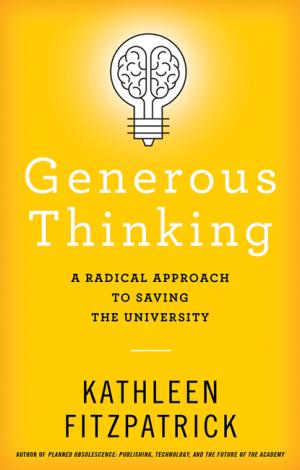
Higher education occupies a difficult place in twenty-first-century American culture. Universities—the institutions that bear so much responsibility for the future health of our nation—are at odds with the very publics they are intended to serve. As Kathleen Fitzpatrick asserts, it is imperative that we re-center the mission of the university to rebuild that lost trust. In Generous Thinking, Fitzpatrick roots this crisis in the work of scholars. Critical thinking—the heart of what academics do—can today often negate, refuse, and reject new ideas. In an age characterized by rampant anti-intellectualism, Fitzpatrick charges the academy with thinking constructively rather than competitively, building new ideas rather than tearing old ones down. She urges us to rethink how we teach the humanities and to refocus our attention on the very human ends—the desire for community and connection—that the humanities can best serve. One key aspect of that transformation involves fostering an atmosphere of what Fitzpatrick dubs "generous thinking," a mode of engagement that emphasizes listening over speaking, community over individualism, and collaboration over competition. Fitzpatrick proposes ways that anyone who cares about the future of higher education can work to build better relationships between our colleges and universities and the public, thereby transforming the way our society functions. She encourages interested stakeholders to listen to and engage openly with one another's concerns by reading and exploring ideas together; by creating collective projects focused around common interests; and by ensuring that our institutions of higher education are structured to support and promote work toward the public good. Meditating on how and why we teach the humanities, Generous Thinking is an audacious book that privileges the ability to empathize and build rather than simply tear apart. (From the Publisher)

Mid-career faculty comprise the largest segment of the academy yet there is scant empirical evidence for the policies and practices related to mid-career faculty. The aim of this chapter is to provide an introduction to the lives of mid-career faculty working at institutions of higher education in the United States. The National Study of Postsecondary Faculty, conducted in 2004, served as the source of the demographic information and included a sample of 1,080 public and private not-for-profit degree granting postsecondary institutions, as well as a sample of 35,000 faculty and instructional staff (National Center for Educational Statistics, 2004). An analysis of recent articles related to mid-career faculty provided a theoretical foundation from which to begin our exploration into the topic. (From the Publisher)
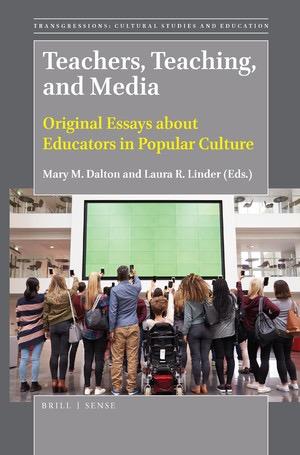
Popular representations of teachers and teaching are easy to take for granted precisely because they are so accessible and pervasive. Our lives are intertextual in the way lived experiences overlap with the stories of others presented to us through mass media. It is this set of connected narratives that we bring into classrooms and into discussions of educational policy. In this day and time—with public education under siege by forces eager to deprofessionalize teaching and transfer public funds to benefit private enterprises—we ignore the dominant discourse about education and the patterns of representation that typify educator characters at our peril. This edited volume offers a fresh take on educator characters in popular culture and also includes important essays about media texts that have not been addressed adequately in the literature previously. The 15 chapters cover diverse forms from literary classics to iconic teacher movies to popular television to rock ‘n’ roll. Topics explored include pedagogy through the lenses of gender, sexuality, race, disability, politics, narrative archetypes, curriculum, teaching strategies, and liberatory praxis. The various perspectives represented in this volume come from scholars and practitioners of education at all levels of schooling. This book is especially timely in an era when public education in the United States is under assault from conservative political forces and undervalued by the general public. (From the Publisher)
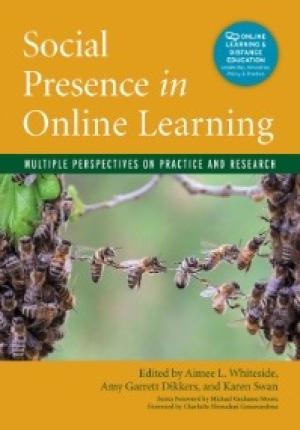
As post-secondary institutions, theological schools continue to participate in various forms of online learning, and the criticism (or question), “It’s not really the same as being in a classroom with a real instructor” is commonly heard. The simple reply to this concern is the concept of social presence. Starting with the initial definition of social presence from Short, Williams, and Christies (1976), this compilation of articles attempts to summarize the historical perspectives and present the current state of discussion, recognizing the constant updating of online course options. The authors successfully present the historical perspectives, grouping them in three broad categories – as technologically facilitated, as learners’ perceptions, and as critical literacy. However, the chronological and developmental approach leaves the reader realizing the earlier chapters have minimal application to current teachers and learners since the understanding of social presence and the technology used have changed so dramatically. The initial discussions about social presence whether through computer-mediated communication or later within the community of inquiry framework were informative, but the reader quickly realizes that the later frameworks and models have improved. Thus the earlier discussions in the book are of little value for today’s teaching-learning environment. In essence, only the last section is relevant, except as historical background. The editors demonstrate their breadth of knowledge of the literature and are involved with and connected to the latest research in social presence. A useful chapter (11), “Cultural Perspectives in Social Presence,” provides valuable guidelines for communicating effectively in a multi-cultural learning context. Multiple examples explain how one subset of students find an online learning activity contributes positively to social presence while those of another culture find it impacts social presence negatively. Variations in anonymity, informal chat, self-disclosure, trust building, and conflict resolution are considered. The chapter concludes with useful tips for monitoring and mediating communication which could be misunderstood because of cultural differences. Likewise, various practices for building social presence into discussions, feedback, and interactions are shared throughout the book. The literature reviewed includes a range of educational levels from K-12 and post-secondary as well as a range of disciplines. The final section provides interesting chapters (17 and 18) about the future of online learning and incorporates social presence into various models of instruction. They suggest social media tools enable instructors to incorporate cohesive and affective elements into courses to enhance social presence. The authors conclude, “Never stop learning because life never stops teaching” (210). The information shared is relevant for any faculty member teaching online, including theological and religious studies professors. While the final chapters contain valuable tips as noted above, I cannot recommend the book as a whole since it is predominantly a historical overview of the concept of social presence. Though it contains various up-to-date strategies in the closing chapters, it was tedious for the reader to sift through the detailed literature for meaningful insights.

For the faculty member transitioning a course from face-to-face (F2F) to an online or blended learning environment, Kathryn Linder’s workbook is a wonderful resource. After opening with a couple chapters reviewing the key components of backward course design, developing appropriate course learning objectives, and assessment, the remaining chapters provide a step-by-step guide for an instructor to convert a course from a physical to a virtual teaching space. The chapters cover a variety of topics including effective learning activities, assessment methods, creating a social presence, using and creating multimedia, and social media engagement. Each chapter contains a short introduction to the pedagogical theory behind the topic (What Do We Know About…) followed by a series of guiding questions, worksheets, and templates for incorporating the theory into course development (A Step-by-Step Guide to…). After a summary of the key ideas, there are questions for faculty and administrators, followed by a graphic that illustrates course design steps and additions. Online resources are often noted for additional planning. An instructor or administrator is provided with all the tools and resources necessary for working through the process in a hands-on, orderly fashion. The book’s main strength is its highly practical nature, highlighted by the ready-to-use worksheets, templates, and checklists for every step in the process. Not only does it explain the desired resources, it usually gives real-life examples of how the tool was used in a blended classroom effectively. Another strength of this book is Linder’s ability to translate and explain technological tasks reasonably for the technophobe. Without talking down, she methodically explains technical components in understandable and achievable action steps for readers. Equally important, she recognizes that schools use different types of technology (for example, Learning Management System), and identifies the major software, programs, and platforms available, accounting for this variety in her instructions. There is little to offer by way of criticism of the book. More than adequate appendices and glossaries complete an already copious amount of resources. The solid reference section supports the extensive research, clearly supporting the material. Given the practical nature of this workbook and its many ready-to-copy worksheets, it is strongly recommended for faculty members transitioning a classroom course to a blended or online delivery format. Likewise, academic deans leading a group of faculty through a similar transition process will find this a one-stop resource, especially if they are able to partner with an educational technologist.
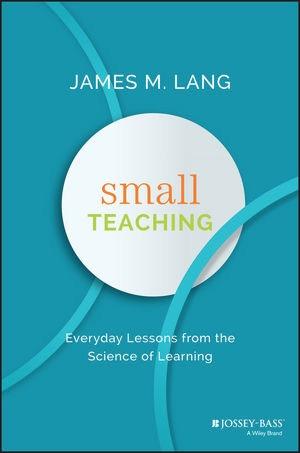
James Lang has written yet another immensely valuable book for post-secondary faculty. Using the analogy of “small ball” from baseball, the author provides classroom activities requiring only a few minutes that can easily be incorporated into a course sporadically or regularly to improve learning. Each strategy is based on the latest research about the human brain, and Lang has witnessed their “positive impact in real-educational environments” (7). The strengths of the book are numerous. First and foremost, it accomplishes the stated purpose. In each of the nine chapters, Lang explains the theory behind the learning principle, describes how the theory has been carried out in classroom models, and then summarizes the principles common in each model. Within the models, the reader finds activities that teachers can incorporate into any class and use randomly or repeatedly that enableing students to learn effectively. Second, each learning activity is transferable across academic disciplines. For example, while discussing “predicting,” the initial research example is from the field of language learning. Lang then applies the principles to his discipline of teaching literature, before concluding with a kinesthetic example of learning an athletic skill. Additionally, Lang recognizes the increasing frequency of teaching and learning online. He also notes students’ access to social media and suggests ways to use the principles and activities of online teaching and social media in a non-traditional classroom format. Finally, while the focus is on in-class actions that take minimal time, he does identify how specific teaching concepts can be incorporated into course planning and the syllabus. The book is well-organized, not only in its presentation but in the ordering of learning from knowledge acquisition to understanding to learning inspiration (motivation), with three strategies explained in each section. Each concept and activity is well-supported by research noted in a full bibliography. For example, in discussing retrieving, Lang gives examples of opening or closing questions an instructor can use in the first or last five minutes of class that will prove effective for short-term and long-term recall, in light of a variety of studies. Where there are questions about the validity of an idea or activity, Lang acknowledges the issues and interacts fairly with contrary opinion. In short, it is hard to find a negative with this book. Because each chapter is follows the pattern of theory, model, then principles, a theology or religious studies teacher can easily take the knowledge or concepts they desire to teach and adapt them to any of the teaching strategies. From a rookie faculty member experiencing challenges midway through a course to an experienced professor looking to improve student learning in a well-developed curriculum, there is something in Small Teaching for everyone. If your college cannot attend one of Lang’s professional development sessions, I would recommend academic deans purchase the book for faculty and together they could work through each chapter.
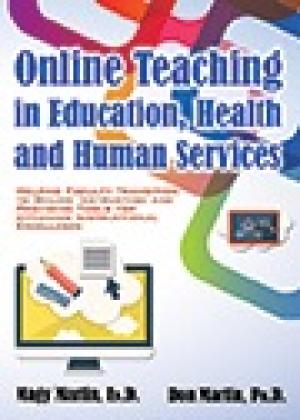
The challenge of teaching an online course brings a measure of trepidation into the heart and mind of even the most experienced classroom instructor. The authors provide a resource for the online instructor to understand who online students are, how they learn, and how to help them achieve their educational goals online (vi). While they accomplish this objective in some senses, the constant repetition of themes detracts from its overall contribution and makes it difficult to recommend. The opening chapter explains the pros and cons of traditional versus online learning, as well as differences and myths of online instruction. The second chapter covers critical issues in online education and then offers success strategies and best practices for instructors. A short explanation of synchronous, asynchronous, and hybrid models and the pros and cons of each strategy, including the type of content best taught by each method, forms the third chapter. At this point, the reader is prepared to start delving into actual practices for online teaching but instead the authors repeat the content of the previous three chapters. Arguably they offer additional perspectives about online teaching and learning in the ensuing chapters, yet the material is so repetitious, one cannot remember the new focus because the text reads like a perpetual review of content. This practice continues for the next five chapters. The one exception is found in chapter 7 where the authors are more focused on specifics necessary for instructors to successfully begin a course with students – including examples of pre-course and early communication (130-131). Chapter 9 continues the specific and valuable contribution chapter 7 begins by looking at specific activities and skills online instructors need for developing critical thinking skills in students, including teamwork practices, and how to assess such learning. The final chapter identifies various strategies that help instructors to manage time well when engaging the demands of teaching online courses. Though partially redundant, the addition of specific tactics and illustrations make the book a helpful contribution. Overall, some helpful principles emerge clearly from the book to help a novice online instructor plan and prepare for a course. The samples provided are beneficial, though an experienced instructor may have been able to develop these on their own from the principles discussed. Unfortunately, in a few instances an example was given that was contrary to the summative advice given. For example, one of the communication tips, to avoid the use of all caps (135), was followed by sample messages to students that included all caps. While appreciating some concepts presented in this volume, this reader will continue to look for a better-organized and more step-by-step book for assisting online instructors.

Growing up with a father who served as the director of the service-learning experiences at a faith-based college, I heard many stories of the joys and challenges of academic and non-profit agencies trying to work together. Later in my own teaching career, similar stories emerged as I witnessed the power and problems of out-of-the-classroom learning experiences. With a clearly stated goal (12), the authors of Community Partner Guide to Campus Collaboration effectively present an orderly guide for non-academic organizations to begin to develop mutually beneficial partnerships with post-secondary institutions. Building on the premise that “effective community-campus relationships educate students and enhance communities” (4), the authors provide multiple ideas and strategies for a community group to function in partnership with a post-secondary institution. After a brief introductory chapter, the book lays out in subsequent chapters particular ways for non-profit leaders to explore and establish potential relationships with colleges and instructors. Within the opening chapters, the authors provide a useful definition of reciprocity that notes the differences between charity and solidarity (41) in community-campus relationships. The authors set a foundation on which a mutually beneficial relationship for both organizational and individual involvement in such partnerships can be constructed. The book also presents a variety of examples to explain the concepts of community-campus relationships. Building on the opening chapters, the authors outline specific steps to assist an agency coordinator in both engaging faculty and empowering students for engaged learning. Again, a variety of practical examples and creative ideas are suggested. The final chapter on evaluation helps community partners, academic instructors, and students evaluate both the impact of their work with the organization and their own personal involvement and learning through such engaged learning experiences. There is little to criticize about this book since it speaks clearly to both academic and non-academic organizations. The authors’ illustrations demonstrate a breadth of experience working within both types of organizations and their writing style is welcoming to readers who may be unacquainted with how community group and college partnerships work together to produce significant student learning outcomes. Some checklists may have provided a helpful summary, but there are other visual clues in the book to emphasize their key points and demonstrate the benefits of this educational approach. The authors are clearly convinced that “communities are stronger when campuses and community agencies collaborate because it creates knowledgeable and engaged students who give back to their communities as committed citizens long after they graduate” (108). Their manual, written specifically for helping non-academic people navigate the post-secondary world, also benefits academics interested in connecting their students to experiential learning opportunities.

Whether you are a teacher, administrator, or coach seeking to improve your own or other’s instructional skills, Jim Knight’s book provides a useful step-by-step guide for doing so through the use of video. With easy-to-follow checklists and examples, the author explains the rationale for each decision in the process and offers options for working within various physical, spatial, and logistical constraints. While more extensive background to other professional development practices for teachers are cited throughout, this manual stands on its own in terms of the physical and social steps necessary for teachers, administrators, and coaches to work together in using video effectively to improve instruction. After laying out the reasons video-recording of instruction can be so effective, Knight methodically and precisely sets forth systematic plans necessary for a coach or teacher to get started. From an individual improvement focus, he then moves to show how teams of teachers can work together and how administrators can facilitate similar processes. Knight constantly focuses on the importance of creating a psychologically safe environment for the use of video. He defines autonomy and accountability and explains how these concepts can work together instead of representing opposite ends of the instructional responsibility spectrum. While always in the forefront of an instructor’s mind when working with students, the same principles of agreement about values, measurable and attainable goals, timely feedback, and constructive communication remain vital in the context of professional development and effective learning environments. Chapter 6 begins with a principal expressing his angst over “teacher evaluations,” a task he views as necessary but onerous. The author suggests that the use of video can parallel assessment strategies utilized by a college dean. Again, the author’s systematic presentation of the details involved in using video for high impact instructional learning makes the process feasible. The main criticism of the book may be that its methodical approach becomes slightly tedious and repetitive. By chapter 5 the reader feels they have already reviewed the general content four times with slightly different applications depending upon the theme of each chapter. While some new and beneficial information pertinent to the context of the chapter is shared, some educators will find the conceptual redundancy wearisome. Insofar as the book is easy-to-read and a valuable step-by-step guide to using current technology to facilitate better individual instruction and collegial discussion of teaching, it could be valuable for teachers of theology and religion at the post-secondary level, even though the book seems geared for the K-12 audience. The (reproducible) resources provided in the book are valuable for teaching and could be used by instructors at any educational level.

This collection of essays by seventeen Generation X faculty members serving in various types of institutions and representing a range of disciplines, ranks, and roles aims to “demonstrate the personal issues, conflicts, and triumphs that are definitive of this generation” as they pertain to their academic careers. While some contributions are stronger than others, as a whole the book achieves its purpose through the insightful and honest author self-reflections. The first sentences of the opening chapter offer, “The truth is unbelieveable, not because it is untrue, but because no one wants to believe it. I am living proof.” The readers’ fear the whole book may sound like the all-too-familiar voice of a Gen Xer is quickly affirmed. The self-analysis of the first story flows into the next three installments and the reader may begin to wonder if the whole book is going to simply be a series of texts from a group of faculty who managed to gain a formal education but think life as a teacher ought to be different somehow. However, Andria J. Woodell’s recollection from a female white southern social psychologist’s perspective changes the tone of the book and is followed by primarily thoughtful reflections and analysis of personal choices and responsibility, within the realities of various institutional contexts. Most authors adeptly identify key factors in their personal journey, including educational background and aspirations, family dynamics, sexual orientation, or race, which impacted their experiences in academia. Following these observations they share information about specific institutional obstacles and supports they encountered along their respective journeys and how each responded to the interplay of these factors. David Prescott-Steed’s chapter, explaining how his PhD research project on “the abyss” metaphor became an intentional factor in his post-doctoral decisions personally and professionally, was entertaining, well-written, and an appropriate summary of a Gen Xer’s values encountering the challenges and triumphs of everyday life. Likewise, Kathleen and George Mollock’s perceptive essay on an academic couples’ journey in the higher education milieu, first as students and then as faculty, describes the choices they made and consequences of those choices, some anticipated, others unexpected. For most Gen X academics, this would be a beneficial read, even if they cannot identify with every individual story or institutional context. Likewise, for the late baby-boomer or early-Gen X administrator, it may provide helpful examples of understanding how the realities of academia are seen from different points of view. For either a faculty member or administrator in a faith-related institution, the narratives of individuals in these contexts also describe the unique challenges and approaches to these extra dimensions of academic life. As a whole, the book presents an appropriate and necessary diversity of experiences (race, gender, sexual orientation, discipline). While some chapters were stronger than others, it was a worthwhile book to read and would be a valuable addition to a post-secondary library.